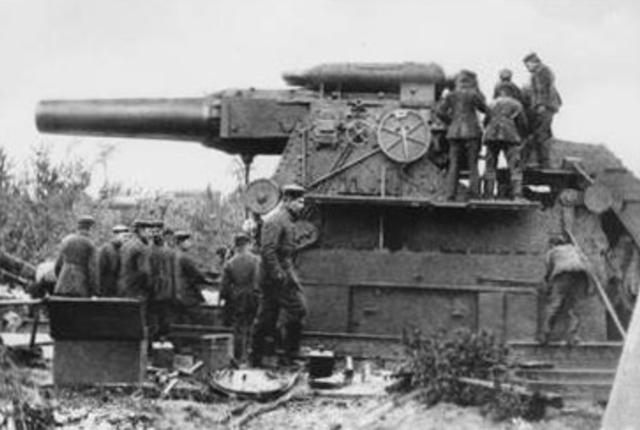The Stalemate Hardens; “This War is the Greatest Insanity”
Special to The Great War Project
(3-4 October) The Germans crash through the first lines of defensive fortresses at Antwerp. The British are even more rattled.
The key for the Germans, according to war historian John Keegan, is the battery of super-heavy guns brought to Antwerp by siege trains. These guns open a breach in the first defensive lines, and the Germans send their infantry through on these days a century ago.
The British counter by bringing in fresh troops on October 4th, temporarily stemming the German attack, writes Keegan.
Also arriving at Antwerp on October 4th a century ago is Winston Churchill, the First Lord of the Admiralty. He is dispatched to Antwerp to determine the true state of the city’s defenses.
That night he telegraphs Lord Kitchener, the British Minister of War, that the Belgians are “weary and disheartened.” The city is so waterlogged, writes historian Martin Gilbert, that Churchill reports…
…the defenders of Antwerp are “unable to dig trenches for their protection.”
The Belgians in the city plead for the British to send more troops. The British muster some 8000 soldiers and move them hurriedly to Antwerp. They come straight from their training barracks in Britain.
Among them is the poet Rupert Brooke, who celebrated the coming of the war with these words:
Now, God be thanked Who has matched us with His hour,
And caught our youth, and wakened us from sleeping.
Enthusiasm in Britain for the war is still high, in the face of enormous slaughter.
But now, a little more than two months into the war, even a senior German officer like Admiral Alfred von Tirpitz, head of the German navy, could write to his wife on October 4th, “This war is really the greatest insanity…. We are exterminating each other on the continent for England to reap the benefit.”
One more significant note about this date October 3rd. German forces enter the Belgian town of Ypres.
A fateful step for thousands of soldiers, it will become a place of unimagined horror.
Fighting on the Eastern Front continues to pose a serious threat to the Austro-Hungarian Empire itself. There are really four fronts in the East, enormous front lines and vast fields of battle. Combined, they constitute an extended front of more than 500 miles from the Baltic in the northern part of Europe to the border with Romania.
It is in the center of this line, writes Keegan, “that the drama of a true war of movement” greater than any seen in Europe since the Napoleonic Wars is unfolding. This, he writes, is war on a “titanic scale” and at this moment it threatens to tear apart the Austro-Hungarian Empire itself.
The war’s pattern is set, writes historian Norman Stone. “In the west a stalemate and in the east a more or less constant Austro-Hungarian crisis.”



I see more and more clearly why so many countries were so slow to act against Hitler in World War II- and at this point, the war is only 3 months old!
J Young, I completely agree. Shuster’s posts are just the beginning of a four year war. “Exhausted” in November, 1918 doesn’t begin to describe how much of Europe must have felt and yet they had to rally themselves to attend the Peace conference in 1919!
Ԝе are a group of νolunteers and opening a new scheme
in our community. Ƴourr site offered us with valuable info
to work on. You have done an impressive job and our whole community wilol be thɑnkful ttօ you.